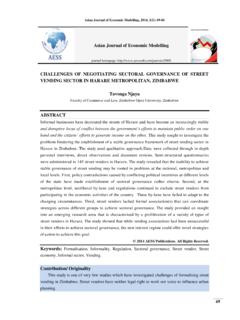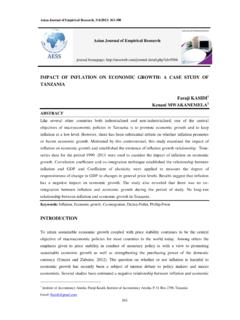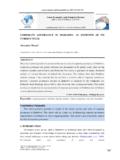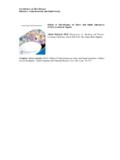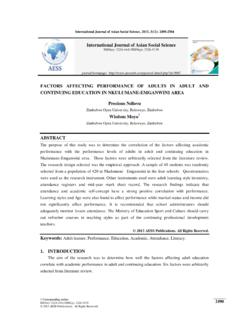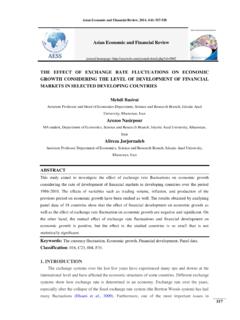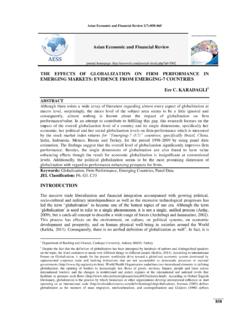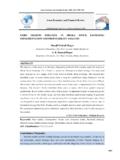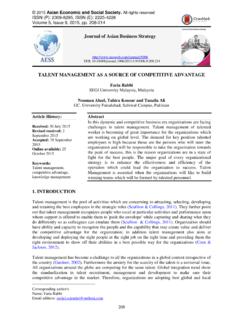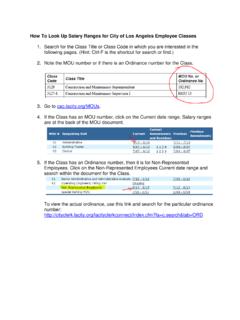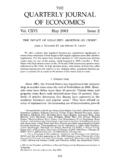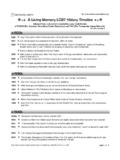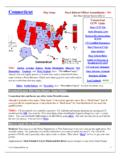Transcription of journal homepage …
1 International journal of Asian Social Science, 2015, 5(4): 203-219. International journal of Asian Social Science ISSN(e): 2224-4441/ISSN(p): 2226-5139. journal homepage : UNDERSTANDING APARTHEID IN SOUTH AFRICA THROUGH THE. RACIAL CONTRACT. Mavis B. Mhlauli1 --- End Salani2 --- Rosinah Mokotedi3. 1,2,3. Department of Primary Education, Faculty of Education, University of Botswana, Botswana ABSTRACT. This article examines apartheid in South Africa and uses Mills (1992) theoretical framework of the Racial Contract to understand how this system operated and flourished in South Africa. To explicate Mills position about racism, this paper draws from the different tenets of Critical Race Theory (CRT) where applicable. It begins by providing an illuminating overview of apartheid in South Africa and uses education, legislation and religion as examples to help unpack the racial inequalities that were rampant in the then South Africa.
2 It further explains the Racial Contract and uses it as an analytical tool to interrogate racism in South Africa. Mills argument is that the racial contract was never a contract since it was nonconsensual, hence negating the validity of its existence in South Africa. Mills contends that the Racial Contract is still in force and now operates in a more de facto stance. This paper recommends that for South Africa to transform it has to understand the modus operandi of racism from a Critical Race Theory perspective in order to unearth the subtle nature of its manifestation in the post-apartheid era. 2015 AESS Publications. All Rights Reserved. Keywords: Racial contract, Racism, South Africa, Critical race theory, Education, Religion, Legislation, Inequality. Contribution/ Originality This study contributes to the existing literature on the Apartheid System of Government in the then South Africa and brings in a new dimension of the use of Critical Race Theory (CRT), in particular, Mills notion of the Racial Contract, as an analytical tool in understanding these social inequities and injustices.
3 1. INTRODUCTION. Never, never and never again shall it be that this beautiful land will again experience the oppression of one by another and suffer the indignity of being the skunk of the world. Let freedom Corresponding author DOI: ISSN(e): 2224-4441/ISSN(p): 2226-5139. 2015 AESS Publications. All Rights Reserved. 203. International journal of Asian Social Science, 2015, 5(4): 203-219. reign. The sun shall never set on so glorious a human achievement! (Nelson Mandela s Inaugural Speech): The above quote, in particular, sets the tone of this paper as South Africa emerged from an oppressive system of government that ordered people by the color of their skin popularly referred to as Apartheid or separate development into a democratically elected government on the 10th May, 1994, a historic moment in the lives of all South Africans.
4 South Africa is well known throughout the world as one of the countries that has practiced racism despite criticism from all over the world including isolation from participation in world affairs and politics. This country is situated at the southern tip of Africa and it borders the Atlantic and Indian oceans, Namibia, Botswana, Zimbabwe and Mozambique. It covers a vast area of land which is approximately 1, 219,080. square kilometers and by 2001 had a population of 44,819,769 people. It has a robust economy within Africa and is well developed in infrastructure. It is divided into nine provinces and has eleven official languages ( factbook/ ). It was colonized by the Dutch East India Company in 1652 who were later to be known as Afrikaners and the British in 1815, and was proclaimed the Union of South Africa in 1910 (Zungu, 1977).
5 2. OVERVIEW OF APARTHEID SYSTEM IN SOUTH AFRICA. Worden (1994) attributes racism in South Africa to the expansion of European colonialism which was part of the scramble for Africa in the middle of the nineteenth century and its notion of civilizing inferior natives. This purported civilization is aligned to the Darwinist notions of evolution and hierarchy that was applied to human beings. This theory of Darwinism made Whites believe that they were at the top of the evolutionary scale which was exhibited through their advancement in technology and imperial expansion. Worden (1994) asserts that Apartheid emerged as the slogan of the Gesuiwerde Nationale Party which was a splinter group from the Hertzog s National Party in 1934 and became popular among Afrikaners in the 1940 s.
6 It is important to note that Afrikaner nationalism is a topic surrounded by mythology and has created its symbolism and its own history stressing the unified experience of the Afrikaner Volk (Worden, 1994). This idea will be elaborated further as this discussion unfolds. Systematized racial discrimination in South Africa did not begin when the Nationalist Party came to power in 1948. It is a result of many factors; it can be traced as far back as the pre- industrial period, similar to what happened in Europe, Asia and America. It dates back to the days of colonial rule when the Dutch first settled at the Cape 1652 and their establishment of a fort at Table Bay (Worden, 1994; Marx, 1998). This establishment of a fort at Table Bay was the beginning of misery for the local inhabitants of this area such as the Khoikhoi herders, San and Khoi pastoralists as evidenced by their being denied access to grazing pastures and water resources and in some cases being robbed of their cattle by the Settler Commandos.
7 This in essence marks the beginning of racial discrimination in South Africa. It should be understood that what was to become South Africa was inherited from the two polities of European settlers mainly the Dutch- descended Afrikaners and the British descended English-speakers (Marx, 1998). 2015 AESS Publications. All Rights Reserved. 204. International journal of Asian Social Science, 2015, 5(4): 203-219. The subsequent formation of apartheid as a legalized system of racial discrimination was influenced by the emergence of Afrikaner nationalism, an ideology that promoted Afrikaner supremacy and pride in response to British invasion as well as the threat from blacks, who were resisting subordination (Worden, 1994). During this period, the Afrikaner nation had endured British Colonial rule throughout most of the 19 th century.
8 They were sustained by maintaining their cultural identity through their language (Afrikaans) and religion (Dutch Reform Church), in this way cultivating a sense of group Nationalism. Winning political power thus put the Afrikaners in a position to steer the country in any direction they so desired. The greatest desire of the Nationalist Party was to take over the major institutions, that is, the economy, the political and educational systems. In order to achieve its goals, the National Party had to design a system which would elevate whites over other racial groupings through economic and political deprivation (Zungu, 1977). Segregation of Blacks Not only was apartheid a system of racial discrimination, however, it was also imposed separation or segregation of blacks and whites in the areas of government, labor market and residency.
9 It was, thus, pervasive in that it was deeply embedded within the economic, social and political structure of the whole country. In order to implement its policy of divide and rule, the Nationalist Party passed a series of laws. Some of the most prominent included the prohibition of mixed marriage, the Immorality Act of 1950, the Group Areas Act of 1950, which promoted the placement of blacks and whites in separate residential areas on a comprehensive and compulsory basis, the Reservation of Separate Amenities Act of 1953, which enforced segregation in the use of public facilities such as transport, cinemas, restaurants and sports facilities and the Bantu Education Act of 1953, a policy for separate schooling and curriculum on the basis of race and the abolition of missionary schools.
10 The latter also introduced a curriculum which emphasized Bantu Culture.. The Verwoerdian rhetoric of Bantu culture was presented as largely rural, and static and was a clear attempt to create a limited vision of Blacks within the broader context of South Africa (Hartshorne, 1992; Worden, 1994). From this scenario, the introduction of the use of mother tongue in schools was not basically an advantage for the Blacks since it was perceived to be myopic and unable to capture some of the scientific concepts as well as lacking the standard orthography. This was a plan to subjugate the Blacks and render them inferior economically, politically and socially through education. In this paper, we shall discuss the latter in greater detail in the section that follows.
